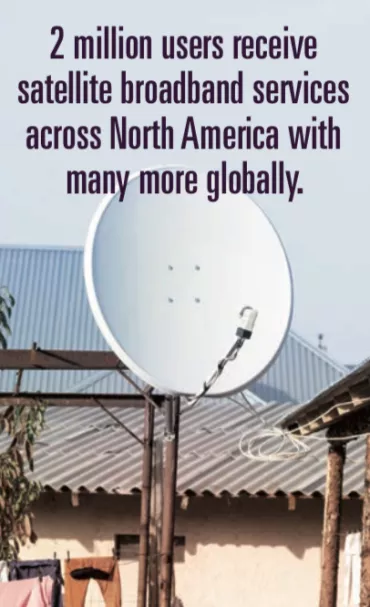The Road to 5G: Two Critical Factors to Ensure Connectivity to All

The following is a reprint of an op-ed written by Jennifer A. Manner, senior vice president of regulatory affairs for Echostar/Hughes. It originally appeared in the Sept. 2, 2019 issue of SpaceNews magazine.
There are approximately 17 million people across the United States, and hundreds of millions more globally, who do not have the ability to access terrestrial broadband. While terrestrial broadband coverage is increasing in some places, there remain wide swaths of geography where such service will never come or where choice is extremely limited to older technologies, such as DSL.
Satellite broadband is a solution to provide service to these people who either don’t have access today through terrestrial means or are underserved and lacking in options of broadband service providers. In the United States and many other countries, speeds are available for broadband service at the FCC-defined broadband speed of 25/3 Mbps or more. Today, as many as 2 million users receive satellite broadband services across North America with many more globally. As we enter the 2020s, in many places, including the United States, speeds of 100 Mbps or more will be available from coast to coast.
As more and more people, no matter where they live, want or even need satellite broadband services as part of their day to day lives, it is increasingly important for the world’s governments to work to ensure that all technologies— whether terrestrial or non-terrestrial— have access to the resources necessary to meet user demands as well as to ensure that there is competition in the marketplace, fostering innovation and cost-effective rates to consumers.
So, what does this take?
FIRST, regulators must ensure that all wireless technologies—whether terrestrial or non-terrestrial—have access to the spectrum they need to support the demands of users for high-speed, high-capacity broadband services. This means that regulators should not focus solely on ensuring there is spectrum available for terrestrial mobile technologies, as some members of the terrestrial wireless industry have pushed. If regulators narrow their focus to terrestrial mobile wireless, there will not be adequate spectrum available to support other technologies, including satellite and Wi-Fi, which are critical for ensuring that everyone has access to broadband.
SECOND, funding to expand broadband services must be made available on a technology neutral basis and should be provided to the service provider that can both meet the user’s requirements, but also be able to reach the user on a cost-effective basis. Accordingly, while in urban and suburban areas, terrestrial fiber and wireless may be cost-effective, when users are located in rural areas or challenging geographic areas, oftentimes satellite technology is most cost-effective since there is no need to construct local infrastructure to meet their needs; the satellite is up and operational and all that is required is, as with any broadband service, the installation of customer premises equipment.
Like any technology, the satellite industry will have to build-out its infrastructure (in this cases satellites, as opposed to fiber and towers) to meet user demand, hence incurring significant costs. Arguments that satellite broadband should be excluded from universal service funding because the infrastructure—its satellites—already exist today are an attempt by competitors to keep the advantage of subsidies to themselves; hence giving themselves a leg up in the marketplace. Enabling satellite broadband providers to compete for broadband funding serves the same purpose as it does for any technology – it brings broadband service to users who might not otherwise have access throughout the build-out of infrastructure.
By ensuring that both terrestrial and non-terrestrial broadband services have access to the resources they need, governments can ensure that their citizens—wherever they live—have access to the broadband services that they require today, at competitive prices. As policy makers look at how to best allocate resources, such as spectrum and funding, they must take a technology neutral approach.
